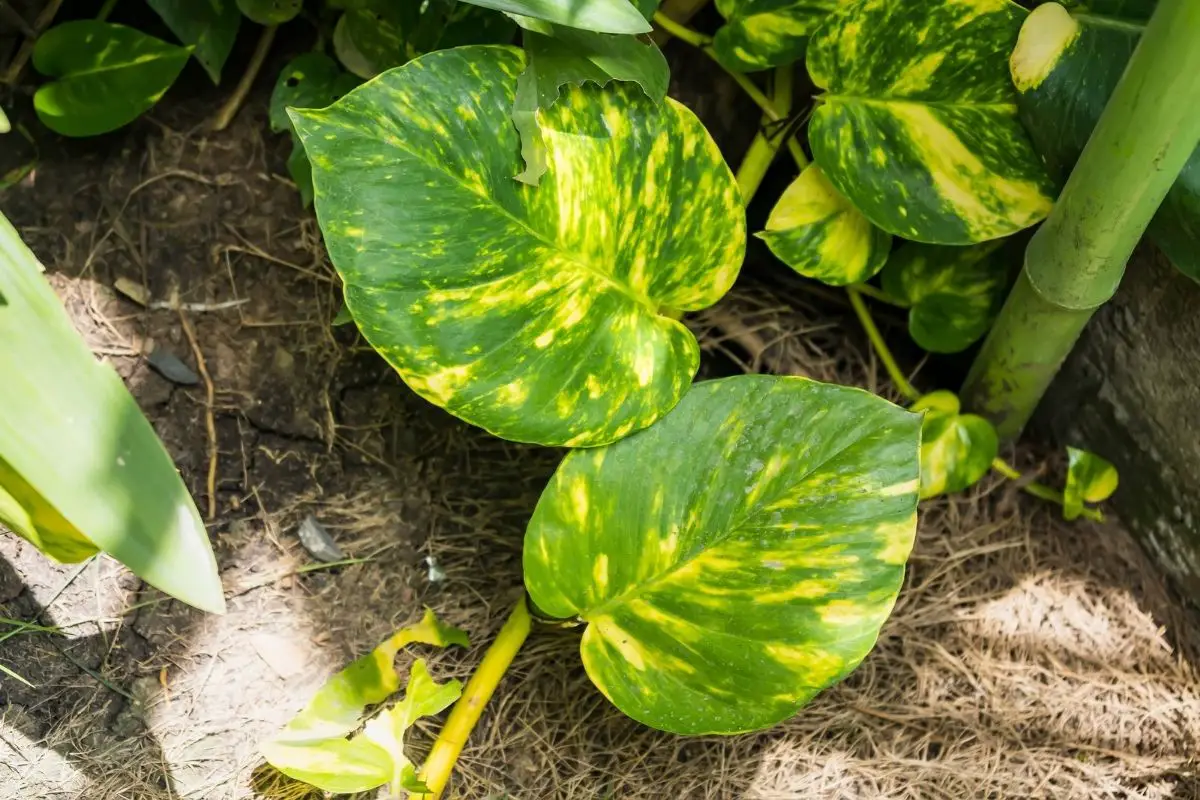Pothos plant is known to be able to survive most conditions! It is a strong and resilient perennial that is almost impossible to kill. Because it is such a forgiving plant, it is considered one of the best indoor plants for beginners.
Even though golden ivy can survive nearly anything, prolonged improper care can slowly start to discolour the plant’s foliage. One of the most common issues with Epipremnum aureum is yellowing leaves.
If you start to notice your plant’s leaves turning yellow or want to prevent this from happening, continue reading this guide to pothos leaves turning yellow: causes and treatments!
Why Is My Pothos Turning Yellow?
When Epipremnum aureum leaves start to turn yellow, this is an indicator that there is something wrong. If you catch the problem in time, you can easily treat it and save your pothos from dying! Common causes include watering issues, improper sun exposure, humidity, pests, and nutrient deficiencies.
Watering Issues
Causes
Overwatering and underwatering can both become a problem in plant care. Devil’s ivy needs to be watered about every one to two weeks.
If your plant is being overwatered, its leaves will start to turn yellow with patches of brown. The foliage may begin to wilt, wrinkle, and droop while the roots slowly rot. When the soil begins to feel soggy, you may have a serious problem.
Underwatering can also cause yellow leaves. If the soil feels extremely dry and the leaves are cracking and discoloured, your plant needs to be revived immediately.
Treatment
Treatment for overwatering will be dependent on how overwatered your plant really is. If the damage doesn’t seem too bad, simply cut back the yellow foliage and make sure to let your golden ivy dry out between each watering. If the soil feels soggy, you will need to repot your ivy into a clean container with fresh potting mix.
If your pothos is too dry, don’t drench it with too much water right away. Simply remove the discoloured leaves and increase the amount of time between waterings. During the growing season, this type of plant needs to be watered once every week.
Improper Sun Exposure
Cause
Generally speaking, pothos can survive in low light situations for quite a while without dying. However, when they don’t have access to light for an extended period of time, their foliage can begin to lose its colour. This may cause leaves to turn yellow and stop growing.
Treatment
The treatment for this issue is by far one of the easiest! Move your Epipremnum aureum to a new area. This species of indoor plant flourishes in bright, indirect sunlight. Be careful not to place it into the direct sun as this will cause even more harm.
Humidity
Cause
Devil’s ivy enjoys humid environments! When they live in environments that have low humidity, their leaves can begin to turn yellow and dry out. Humidity is especially important to manage during the dry seasons.
Treatment
Occasionally misting your plant is a great start to improving humidity levels. You may want to consider misting after every watering. Other treatments include placing your devil’s ivy next to other plants and/or putting a humidifier in the space it lives in.
Pests
Cause
Spider mites are known to attack Epipremnum aureum! These pests are common indoors and can remove moisture from your plant. The first sign of a spider mite infestation is yellow leaves.
Closely examine your plant’s foliage for little black and white dots. You may also see webs forming around the stems. If this is what your pothos looks like, you have a spider mite infestation!
Treatment
Immediately wipe your plant down with rubbing alcohol, neem oil, miticide, or insecticidal oil. Either one of these treatments should be able to kill off the infestation. If the pests come back, treat your plant again and repot into a sterilized container with fresh soil.
Nutrient Deficiencies
Cause
Stunted growth and yellow leaves could be a sign that your golden ivy is not getting enough nutrients. When your plant doesn’t receive a proper amount of fertilizer during the growing season, it has an incredibly hard time growing.
Treatment
A lack of nutrients can be easily fixed by implementing a proper feeding schedule. From the beginning of spring to early fall, consistently fertilize your devil’s ivy with a balanced 10-10-10 or 20-20-20 fertilizer. Don’t exceed over two feedings a month!
Pothos Leaves Turning White
If the leaves are becoming white, it’s usually because of the low amount of light. You can try moving the pot closer to the windows to get more indirect light.
Pothos Leaves Turning Black
Common reasons for the leaves to become black are excessive water in the soil, excessive fertilizer, too much light, or the room temperature is too low or too high.
FAQs
Should I remove yellow leaves from pothos?
Trim the yellow leaves off of your pothos and attempt to identify the underlying problem. If your entire plant has turned yellow, the roots have most likely been damaged and may not survive.
Can yellow pothos leaves turn green again?
Yellow leaves very rarely turn green again. It’s best to find the source of the problem and cut off any dying foliage.
What do yellow leaves mean?
Yellow leaves can be an indicator of a few different diseases. While the most common reason your pothos is turning yellow is overwatering, yellow leaves could also be a sign of underwatering, too low light, pests, and/or nutrient deficiencies.
How do I revive my yellowing pothos?
The solution to reviving your yellowing pothos is dependent on what caused it to become discoloured. The first step is finding the problem, trimming the damaged foliage, and implementing an optimal plant care routine.
What does an overwatered pothos look like?
An overwatered pothos almost always turns yellow if the overwatering persists for a long period of time. The plant may also start to turn brown and wilt.
~ image source: depositphotos/Bubbers

